AcousticSampleS Wurlie Review
Unlike the majority of Wurlitzer-based virtual instruments available, this is *not* still another tiresome interpretation of the now common “A200” model. Nope. This here, y’all, is delightfully unique in that it is a meticulously-crafted sample library of a model 206A ‘student’ Wurlitzer. Of course, being a “Wurlie”, it has that classic, definitive early 70s sound, but with just a teensy bit more attitude and vibe.
Wurlie from AcousticSampleS is a virtual instrument for the discriminating vintage-keyboard connoisseur. This is a superb sample library (again in UVI Workstation format) of a sexy little 64-key model 206A Wurlitzer®. The samples were recorded via studio-grade DI into a high end tube-powered preamp *and with a pair of high-grade microphones right above it – all at a sampling rate of 96 kilohertz and 24-bit, bit depth. This painstaking recording process has resulted in a VI (virtual instrument) that easily reproduces both the feeling and also the sound that we’re looking for; tube ampage with the direct mechanical sound intact. The tone is rich, well-balanced and precipitates with absolute opulence in the sympathetic response and resonance departments. If you’re looking to own a ‘Logical’ choice for authentic, characterful Wurlitzer realism in-the-box, it can be had for the reasonable price of 79€ / $87 (USD).
Ahh, the warm, harmonically complex tones of a classic Wurly in excellent repair; is there anything sweeter sounding to a collector’s ears? Well, not really, except maybe for a Rhodes of the same vintage. The trouble is, maintaining a Wurlitzer can be a rather daunting task that often requires the skill of an experienced technician. Why, even tuning a Wurly very often requires a soldering iron. EEP!
Fortunately for those of us whom have become well-acquainted and furnished with digital emulations, we need not shop around for a 40 year old instrument, pay big collector’s fees to buy it, and then have a climate-controlled space to keep it safe. We simply pop online, pay a small fee to a hard working developer, and conveniently download a VSTi or sample library to our hard drive. Subsequently, we have at our beck and call, the means to compare and scrutinize the assiduous results of the developers. Quite frankly, we’re rather spoiled. *Grin.
You may be asking: “Sheesh, Brother Charles, why in the world would I want to cough up the better part of $hundred bucks for another Wurly VI? What makes this one so special?”
I’m glad you asked; it’s a perfectly valid query. In response, I’ll start off by letting you know that the library’s footprint is joyously sleek. Due to FLAC lossless compression, all 1.28 Gigabytes of sample data is compressed down to a tidy 278 megabytes. Next, as with all AcousticSampleS’ wares, it’s EZ-Breezy to dial up great sounds quickly. Thirdly, the handsome, photo-realistic GUI is functional and well laid out. Most importantly, the sound quality contained in this nifty little UFS container is superb and needs not take a backseat to any similar, competing product. For me personally, AcousticSampleS’ “Wurlie” comes out a clear winner on all these fronts.
Personally, I prefer personalized serial number or digital water-marking over ‘Challenge/Response’ activations or dongle protection. Nevertheless, I of course, understand the necessity of developers making efforts to protect their businesses from flagrant software piracy.
* The latest AcousticSampleS licenses can also be machine activated/authorized.
Installation and Authorization:
Once a purchase has been transacted, the buyer receives an emailed invoice listing a personalized serial number. Presumably, a customer has created a User Account at acousticsamples.net whereby the serial number can be registered and authorized. Once this has been accomplished, download links are provided in the “Downloads/Serials” section of the user’s online account. The process is simple and efficient. There aren’t any restrictions placed on the frequency or availability of purchased downloads.
Visuals:
Differing from many other Wurlitzer VIs, this one *does not characterize grey/black color tones. Instead, it portrays a 206A ‘student’ model which was covered with tan-coloured tolex. The main panel’s user-adjustable controls are intelligently laid out in two, neatly arranged rows - these facilitate quick, easy adjustments. The instrument’s GUI is charming, functional and implies an authentic e-Piano experience from the famed classic-rock period. J’aime Ça encore!
Operations & Control:
Grouped into two rows on the main screen, we’re supplied a conventional yet satisfying array of controls for manipulating basic Wurlitzer parameters. Along the top row we find Electric and Acoustic levels, Vibrato type, rate and depth, and Cabinet (off/on). As well, there is a discrete drop down menu neatly tucked under the Cabinet knob, providing a collection of varying cabinet types. To my delight, this tidy little bevy of impulse responses also includes Gibson and Fender cabinets. The bottom row of dials is more centric to making tonal and effects accommodations. Here we are greeted with Bass & Treble, Spring (reverb), Distortion (or more accurately, overdrive), Chorus and lastly Flanger. Each of these responds smoothly to mouse movements. All of the control labels are legible and clearly seen in bold, black text against a ‘silver’ background.
The bottom row of knobs is dedicated to managing the instrument’s Dynamics, velocity Threshold, velocity Sensitivity and velocity Curve - these allow a user to tailor the instrument’s midi and velocity responsiveness proportionate to his/her midi keyboard.
Making adjustments to any of the dials results in smooth, gradual changes to the instrument’s sound. The stereo-capable vibrato/panning feature convincingly captures that definitive Wurlie ‘whirl’. Double clicking on any of the user-adjustable controls allows for direct value input from computer keyboard, which is most convenient. As a small niggle, there doesn’t seem to be a quick way to reset a parameter back to its default. Although it’s super simple to dial up a *great sound in “Wurlie”, I was slightly disappointed that the library wasn’t prepared with a selection of a few common/famous Wurlitzer™ presets. (As with “Mark79”, I’m reaching to find something slightly negative to keep this review balanced) *Smile. This library has ten true velocity layers on tap for natural sustained notes as well as a whopping 20 layers of release noises. The UVI scripting ‘under-the-hood’ performs admirably and ensures seamless, intelligent cohesion between the various sampled elements. As mentioned earlier, part of the recording process involved a pair of close, overhead mics positioned directly above the original instrument to capture the ‘acoustic’ properties of the piano’s mechanics. Having an independent Acoustic volume leveler accords a user the means of blending these sonic elements completely to his/her discretion, resulting in a wonderfully satisfying Wurly experience. Release and pedal noise samples can be set between -20dB to +10dB, allowing for a wide range of control. AcousticSampleS have baled together a generous mound of good quality Cabinet IRs for us in this release. From the Cabinet-type dropdown list we can choose from 18 different variations such as: Cabs (Built-in speakers), Fender 2x12, Mesa, Gibson, Markbass and others. These are provided in both stereo and mono configurations. It is interesting to note that the Built-in Cabs are implemented from three perspectives of distance (Close, Player and Far). Furthermore, relative perception of cabinet distance is tweakable on the “Settings” panel.
Sound Quality:
Just like the McDonalds commercials diddy : I’m lovin’ it! Vibe, growl, character, and mellow warmth all simultaneously available at your fingertips.“You know what I’m talkin’ bout, Willis?” It’s that something special that has to be heard, and is difficult to describe. It’s that certain amount of ‘ping’ that resounds off metal reeds combined with the ‘knock’ of the mallets striking them. It’s that deliciously musical balance of delicate warmth harmoniously coexisting with sonorous bite. The AcousticSampleS’ “Wurlie” makes its presence well known due to the ample velocity layer range it hosts. Soft, emotive passages all the way through to raucous grunge – Wurlie delivers electromechanical realism in spades. At its default settings, it seems to me, that there is a just right amount of note ‘stickiness’ here. The user-adjustable release noise knob on the “Settings” panel will aid you in configuring a perfect balance to suit your own preference. Out of the box, without touching any of the parameters, I just couldn’t help but wanting to vamp Ray Charles’ licks all night long. The upper register produces silken highs while the lower region emits big, warm vibes. The tone goes from here til next Tuesday - its phonic charms massaging your auditory senses into eager, willful submission. “Wurlie” weaves it sonic web of allure with finesse and vibey attitude a-plenty. From classic rock to soulful jazz, this one can satiate even the most discriminating aficionado.
Deferring back to the “Settings” panel, easy manipulation of spring ‘length’ is at our disposal. Time-honored ‘amped’ tones are realized further by engaging the Cab feature. The assortment of included cabinet IRs provide a splay of desirable tonal variations, but truth be told, the default Built-in speakers have a definite cool factor all their own.
Across the compact 64-key spectrum, the tone remains authentic and enthralling. Put on a pair of studio headphones, dim the lights, turn on the lava lamp and just . . . enjoy. At its default EQ settings, the instrument exhibits a full-bodied tonal palette. Thanks to the pair of ‘tuned-by-ear’ parametric EQ controls, Beyoncé-league bottom and titillating top end spark are only twists-of-the-dials away.
There’s a uniquely-defined sound in an original instrument’s pulse and swell that is not-so-easily mimicked, digitally. There’s more to it than simple volume oscillation. Owners of *real Wurlys are quick to hear the difference between the genuine article and some cold digital rip off. This is due in part to the tonal and intonation variations whilst the oscillation is . . . er . . . oscillating. *ahem. I am very pleased to report that AcousticSampleS have done a really, really good job of reproducing this particular feature.
This virtual instrument features workable Chorus & Flanger effects, upfront and center. When turned on at their default values, I would consider both of them to be too strong and somewhat overbearing. However, when reigned in, these effects do become more usable. While testing here on the reviewer's bench, I found them to be definitely noticeable - even at conservative settings. Lowering the Chorus & Flanger times on the settings panel helped to make them a little more subtle. Conversely, if you're looking for pulsating, "Rotory" chorusing, or classic CE-1 vibrato-like effects, you'll not be disappointed. Overall, I find the ‘playability’ and cadence of this sample library consistent across its five(+) octave range. I’ve tried to impart with words what my ears hear; I’m not sure that I’ve done the instrument justice. I encourage you to visit the developer’s web site (link included at the bottom) and listen to the audio demos. Additionally, please have a watch n’ listen of my brief video presentation – also listed below.
CPU Consumption:
I‘ve been bench-testing/reviewing “Wurlie” on an Intel i3 (2nd gen) laptop using a standard 5400 RPM HDD – performance has been flawless. I’ve not experienced any drop-outs or glitches. While monitoring with the Windows 7 (64-bit) Task Manager, I’ve not seen CPU spikes rise above 10 percent while keeping the sustain pedal depressed and playing as many (random) notes as possible. Actual playing sees a CPU demand of approximately three to seven percent. Concluding Remarks: AcousticSampleS have outdone themselves with this one. “Wurlie” looks good, ‘feels’ good, and sounds GREAT! In this writer’s opinion, it accurately renders a highly usable and enjoyable vintage electric piano experience. Not only does this VI sound great, it responds exceptionally well. With lower latency settings, the dynamics and responsiveness are genuine and gratifying.
iLok dongle protection can be annoying for laptop users since most portable computers tend to be conservatively appointed with available USB ports. Nevertheless, iLok protection does provide a degree of convenience. No need to worry about reactivating your software on a new computer using any type of “Service Center” or “Authorization Manager”. As long as you keep your iLok dongle safe, you’re good to go. Furthermore, a user is not limited to the number or type of computers that their purchased software may be installed on – they must simply keep their iLok connected to the computer in use at the time.
I’m blessed to have quite a few virtual Wurlys to choose from. Along with the illustrious “Broken Wurli” from SonicCouture, I confidently put this one up at the top of the list as a very authentic-sounding choice. :: PROS - Cool, period-accurate interface design. - Realistic-sounding Wurly library oozing with character. - Excellent quality for a reasonable cost . - Simple to configure & Easy to dial up great Wurly sounds. - One of the BEST Wurly Vibrato emulations. - Modest system requirements. - Plenty of control over midi dynamics and sensitivity. - Good selection of convincing cabinet impulse responses. - Honourable, customer-oriented company. - Available for both MAC & PC (32 & 64 bit, including AAX) :: CONS - It would be nice to have a few presets. Since this is a UVI-powered sample library, some useful presets including phase, chorus, delay, and etcetera would add an additional degree of “out-of-the-box” convenience. - The built-in Chorus and Flanging effects tend to be strong and usually need to be used with their dials adjusted to minimal settings. - I’m not particularly struck on iLok protection for laptop use, but generally, it is a reliable and trouble-free copy protection system.
Be sure to check out the show & tell video too!
Brother Charles is a freelance writer, Gospel music artist and minister. Charles had been a professional touring musician during the nineties; working primarily as a lead guitarist in the Canadian country music industry. Brother Charles is also involved with music production and quality home recording.
2 Comments
Paul A.
6/5/2015 12:36:38 pm
Shoot! Your reviews keep getting better and better brother charles!! How come more people don't use this on? I really like the sound clips and video too! you play pretty good, but your writing should be in all the magazines. I really like your reviews cause you go into detail but it's not boring.
Reply
Ben Spinks
5/9/2016 08:23:55 am
Have you compared this to the Soniccouture Broken Wurli? Wondering if they are different enough to live together. Looking forward to a review of the new AS B-5 btw, which is wonderful imho.
Reply
Your comment will be posted after it is approved.
Leave a Reply. |
NO SPAM! IK Multimedia Group Buy
FX Pick & Mix Group Buy - up to 16 for the price of 1
Will You Help?Web hosting is getting more and more expensive all the time, and Reviewer's Revival is NOT funded nor supported by any commercial enterprise or business. A donation of any amount is greatly appreciated. Even $2 or $3 for a coffee - every little bit helps. Thanks very much.
Legal BlurbAll of the articles published on Reviewer's Revival are undertaken to be purely objective, impartial reviews. Reviewer's Revival is not owned, funded-by, nor hired by any company or individual. Reviewer's Revival is the sole property of, and solely under the discretion and direction of Brother Charles. |

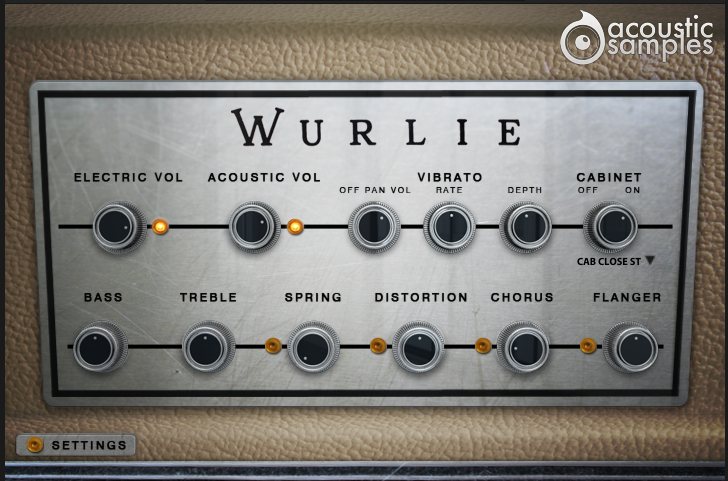

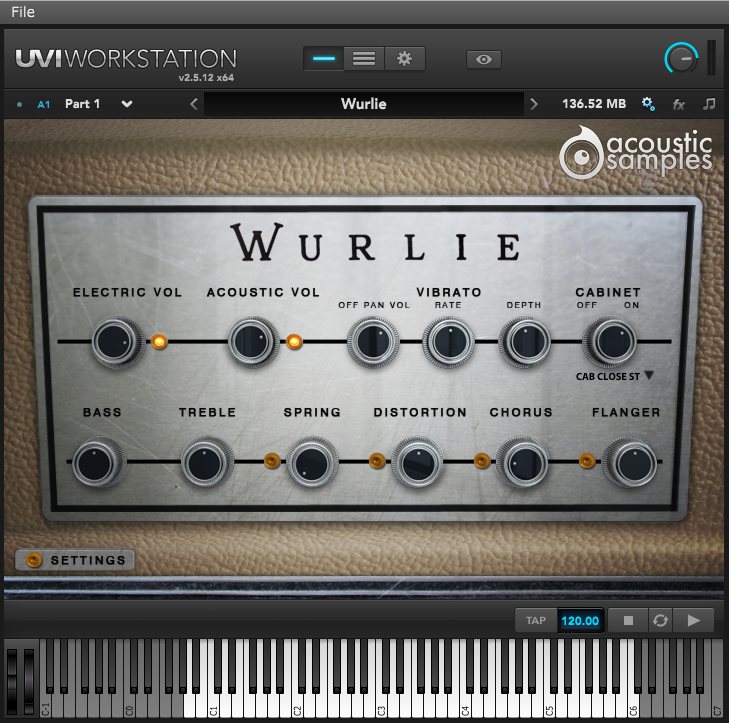
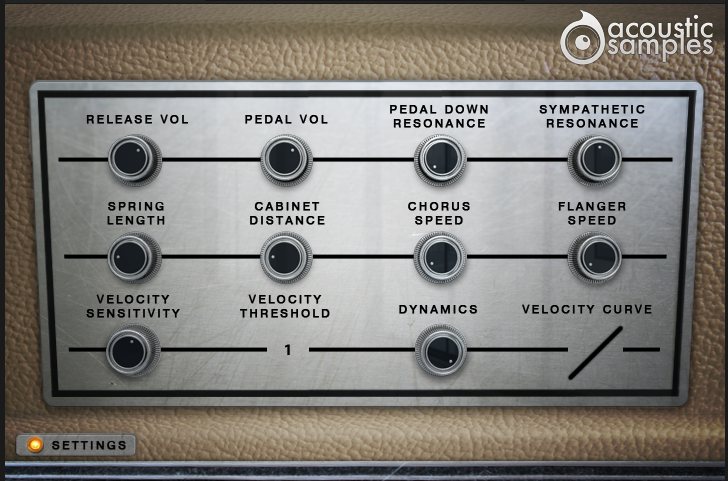
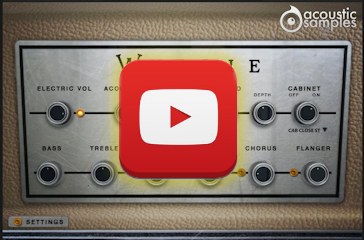

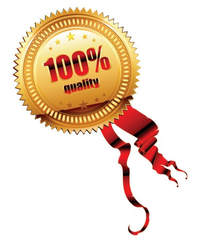

 15% OFF Summer Sale!
15% OFF Summer Sale!
 RSS Feed
RSS Feed

